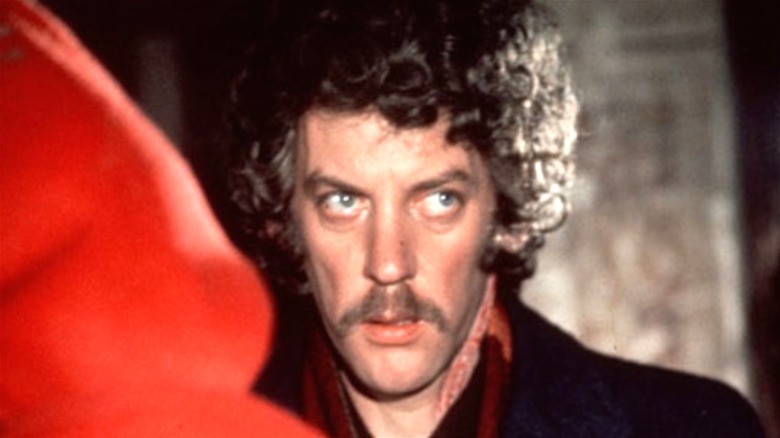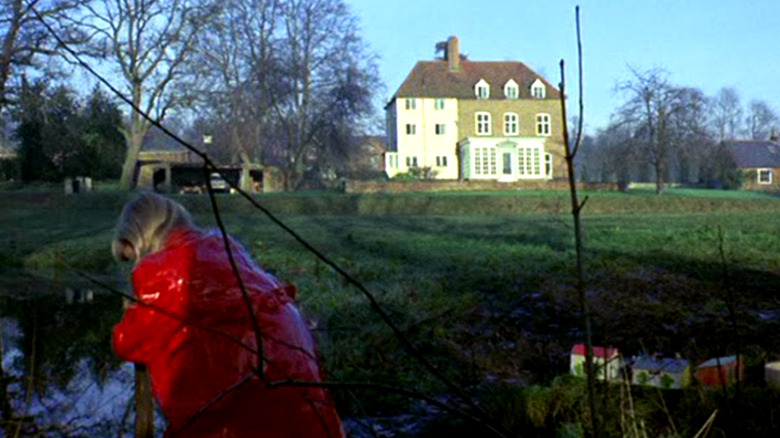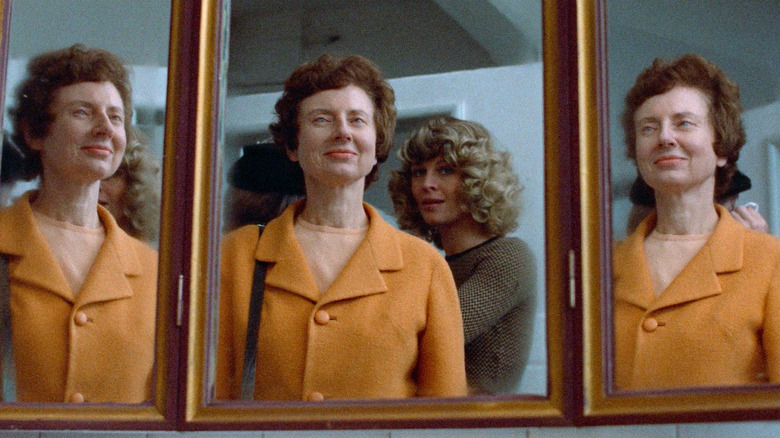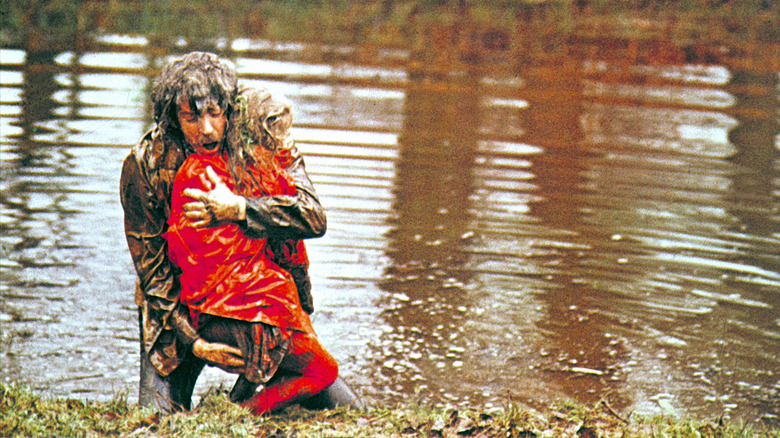The Most Surprising Death In Don't Look Now
Beginning in the 1970s, Donald Sutherland moved from his traditional home on television to become a regular fixture in film, particularly in the horror genre. "The Puppet Masters," "Buffy the Vampire Slayer," and "Fallen" are all solid horror movies that are elevated thanks to that deep, foreboding Donald Sutherland voice. Even something like "The Hunger Games," which is not horror in and of itself, is made much scarier thanks to Sutherland's involvement.
There are, however, two movies that solidify Sutherland as a horror movie icon: "Invasion of the Body Snatchers" and "Don't Look Now." The 1970s remake of "Invasion of the Body Snatchers" takes the paranoia-fueled alien invasion story from a small town to a large city. Sutherland's performance as food inspector Matthew Bennell adds relatability and real depth to the proceedings, and his meme-inspiring face at the close of the picture stands to this day as one of the most terrifying and emotionally affecting endings of any horror movie ever.
However, despite the beloved status of "Invasion of the Body Snatchers," it's hard not to still see his other '70s horror film "Don't Look Now" as his most iconic of all. The film's exploration of grief is unlike almost any other horror movie. If anything, "Don't Look Now" shares more DNA with a family drama like 2001's "In the Bedroom" than it does with something like "Invasion of the Body Snatchers."
And a major part of what makes "Don't Look Now" so unforgettable is the shocking death its story is built around.
Christine, a red slicker, and a ball in a lake
The opening scene of "Don't Look Now" is set in the English countryside where Laura (Julie Christie) and John Baxter (Donald Sutherland) reside with their two children Johnny (Nicholas Salter) and Christine (Sharon Williams).
The setting is serene: outside, Johnny rides his bicycle as Christine in her red slicker plays with a ball. Meanwhile, Laura and John carry on their adult lives inside. But right away, director Nicolas Roeg tells us something isn't right as he cuts, faster and faster, between the children outside and their parents inside. As Christine begins playing near the lake, the risk to her life becomes all too real to the audience — which is amplified by the fact that neither Laura nor John are aware of the danger.
Giampiero Boneschi and Pino Donaggio crafted a piano tune called "John's Theme (Children Play)" which is performed over the opening scene as though it is played by a child — excitedly, but clumsily. Mirrored in the two settings we see clumsiness in action as Christine drops her ball into the lake and John spills a glass of water on his photo negatives. As John inspects the damage done, we see a red stain mar the image of a church. The red is like blood. The red is like the color of Christine's coat, and at that moment, John senses something is wrong.
Nothing is what it seems
John runs toward the lake as Johnny runs toward the house — one to save, the other seeking safety. But even as John leaps into the water, the audience has already seen Christine submerged. We hear John inhale deeply as he plunges into the depths, and we know with chilling clarity that he has discovered what we knew all along when that breath is let out as a scream of anguish — it's too late.
But we didn't call this "the most predictable death in 'Don't Look Now,'" did we? So how can it be that something so entirely foreshadowed in every second of the film's brief opening still remains so surprising?
There is no greater loss than the death of a child. And while we all quietly understand that tomorrow is promised to no one, there is a persistent lie all parents tell themselves: that our children will outlive us and that we will live long enough to instill within them the lessons, the hopes, and the dreams of humanity so that our kids can carry on happily without us when our final day inevitably arrives. Anything else, we tell ourselves, would be unnatural.
Before Christine's tragic death, Laura is looking up the answer to a question her daughter asked her: "if the world is round, why is a frozen pond flat?" Laura discovers that Lake Ontario does, in fact, curve — meaning that even though it may not seem like it, lakes can, in fact, freeze in a subtly rounded shape. "Nothing is what it seems," John responds — and he has no idea how right he is.
A truth we cannot accept
Everyone assumes Christine will live a long, happy life up until the moment she doesn't. John and Laura's lives are in a constant state of motion until the moment Christine perishes. Nothing is what it seems. We believe our children will outlive us, but sometimes we're wrong. And the inability to accept that loss, the impenetrable grief of losing that which we most hold dear, causes our lives to freeze and appear as flat and lifeless as a lake in winter.
A book seated next to Laura is titled "Beyond the Fragile Geometry of Space." Our very perception of life is so tremendously fragile. We believe certain things to the core of our very being, no matter how untrue they may be, because sometimes the truth is too terrifying to face. The dissonance between belief and reality can be shattering.
And so whether you are watching "Don't Look Now" for the first or the hundredth time, you will always be surprised when Christine dies. No matter how many times we watch John dive into that water, some part of us will always choose to believe that this time will be different, that this time Christine will be alright, and that life will carry on, full, rounded, and whole. Because our children always outlive us, don't they?



